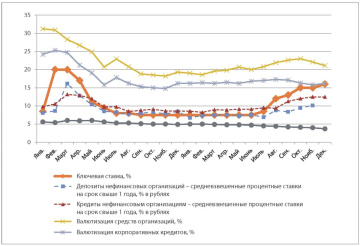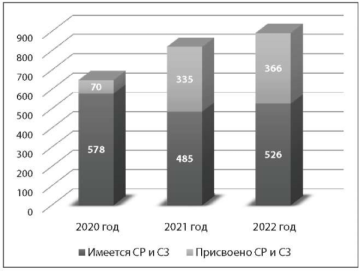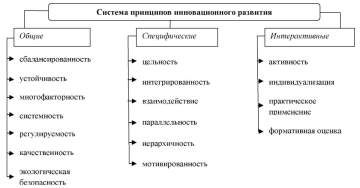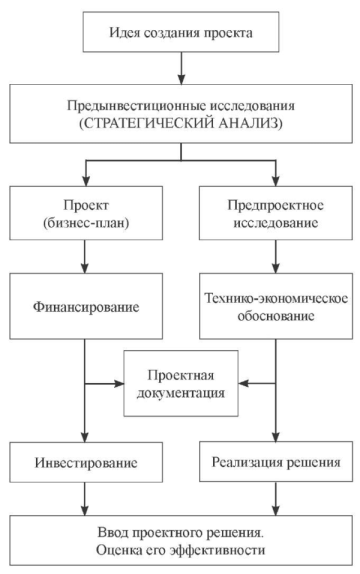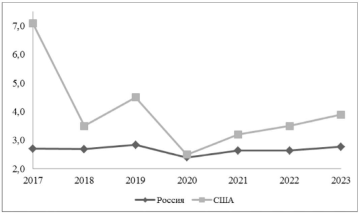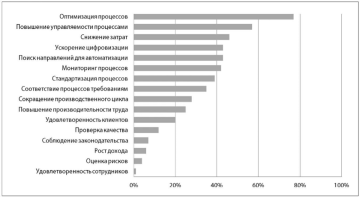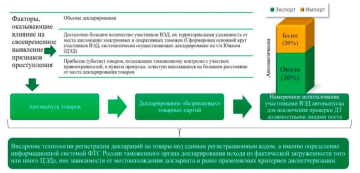ECONOMICS
The study focuses on a business model that fully defines the approaches and methods of work of a commercial bank with corporate customers. The customer base of particular credit institutions changed considerably in 2022–2023, while the structure of the cumulative balance did not experience profound changes. Thus, PJSC JSCB Avangard’s focus on corporate services led to substantial changes in the liability structure, causing an outflow of funds from individuals. The authors analyzed the business model of Avangard in comparison with the activities of banks operating under the Tochka brand. The financial strategy of Avangard is to increase risk-free (transaction) income and liquid assets on the balance sheet while reducing the accepted credit risk. A special feature of the business model of Avangard is the fact that the majority shareholder takes an active part in resolving not only strategic but also major operational issues. Avangard is a member of a large financial group, which includes organizations in the agricultural, industrial, economic, and investment sectors and services their functioning, without placing much emphasis on attracting clients external to the group. According to the study, the business model of working with corporate customers of the classical bank PJSC JSCB Avangard has the main advantage of maintaining its traditionalism, while also being flexible in digital development, immediately adapting to the turbulence of the financial market, and developing its technological effectiveness. This model of a classic bank, focused on the quality of cash services, will be in demand among corporate customers in the coming years, and, perhaps, even more viable than the Tochka ecosystem models. The shortcomings of the business model of Avangard are the low level of involvement in the competition for servicing small and medium-sized businesses corporate segment, which is reflected in unfavorable tariffs, underdeveloped affiliate programs and digital areas of banking business, in comparison with the activities of Tinkoff Bank JSC, VTB Bank (PJSC), Alfa-Bank JSC and Sberbank PJSC.
The increasing relevance of the problem of efficient resource utilization can be attributed to the popularity of sustainable development and the challenges posed by biological, climatic, and geopolitical factors, all of which are connected to society’s perception of crucial elements of the natural environment like land, water resources, and air. Specifically focused on rural areas, the research presented in this article examines the issues of effective resource utilization. The main scientific conclusion proposed in the work is that resource saving is an inevitable consequence of the negative manifestations of climate change, which entails positive effects for agricultural producers and the rural population, largely depends, first, on the motivation of rural entrepreneurs, secondly, on the state initiatives recorded in institutional documents, thirdly, on the preferences of rural communities and their active participation in the implementation of the concept under consideration.
The article studies the activities results of the municipal and autonomous institution of additional education.The peculiarities of autonomous institutions, particularly in the financial sector are formulated. The purpose of the study is to substantiate the directions of strategic development of a municipal and autonomous institution in physical culture and sports. The authors studied the indicators dynamics of the institution’s activity, reported the results of extra-budgetary activities. Based on the social significance of the services provided, the author’s approach focuses on expanding the consumer segment. The novelty of the research results is determined by the introduction of adaptive programs of additional education for children with disabilities. The identification of the directions for development determines the formulation of recommendations that are most in demand, real, and rational in relation to the resource provision of the institution. The conclusion states that there is potential to achieve a multiplier effect in terms of strategic management of a municipal and autonomous institution through systematic physical education and sports in the municipality, resulting in increased economic and social benefits.
The article discusses the results of a theoretical analysis of approaches to defining the concepts of “innovation” and “innovative development”. The authors proposed historical and economic approaches to the interpretation of the term “innovation”. These approaches identified three directions for considering the essence of innovative development: as a new stage of economic development, as a necessary element of economic growth, and as an obligatory element of economic development. The authors systematized the principles of innovative development and arranged them into three groups: general, specific, and interactive. In contrast to general and specific ones, the latter reflect modern trends in innovative development. The authors include the following interactive principles: activity, individualization, practical application and formative assessment. The article emphasizes that the dominant characteristic of innovative development is also its universality, i.e. innovatively in the modern economy, all industrial sectors will develop in different proportions.
The purpose of the article is to characterize the features of project risk management under conditions of uncertainty. The relevance is determined by the currently intensified problems of the economy, which have a restraining effect on the sustainability of the business sector and the activities of its subjects. Due to increased risks, it is necessary to select the optimal methodology for implementing project solutions, as problems can be defined as limiting factors in the development and implementation of projects. The importance of implementing project management practices in the process of managing an organization is undeniable, since investments provide an opportunity to increase investment attractiveness and, as a result, stimulate the development of entrepreneurial activity, capacity expansion, renewal and modernization of equipment, and so on.
The subject of the study is theoretical, methodological and practical problems in assessing the development potential of the tourism industry in the economy of Russian regions. The work aims to validate the scientific and methodological provisions for evaluating and implementing the development potential of the tourism industry in the Russian regions’ economy. Enhancing the methodology for assessing the potential for tourism activities at the regional economy level is the primary task. The work methodology includes the method of logical generalization and scientific synthesis, the econometric method, mathematical method of stochastic differential equations. A special feature of the author’s approach is the applied aspect of the
listed methods, which makes it possible to identify economic factors in the development of the tourism sector within the regions. The methodology contains an element of scientific novelty as a differential-stochastic model for analyzing economic factors in the development of tourism activities, which serves to build estimates for the values of regional financial and economic parameters. The results obtained make it possible to develop practical recommendations for specialized business entities and government authorities to realize the existing
potential for the development of the tourism economy in the regions of Russia, including its new territories.
A high level of competitiveness of a company is one of the key factors that guarantees stable long-term economic development and a stable position of the enterprise in the market. Competition is a trigger for activating innovative processes and introducing modern information technologies into the enter prise infrastructure. The lack of control and regulation system, the low level of automation of processes, their inconsistency with strategic goals and duplication significantly reduce the overall level of competitiveness of the enterprise and negatively affects economic profit. As a tool that can increase a company’s competitive position in the market, the work explores the digital technology of in-depth analysis, that is Process Mining. This article aims to explore how businesses gain a competitive edge by using business process mining technology. It also examines the current trends in implementing process analytics across different industries. Process Mining technology is the focus of the study. The subject is the impact of business process mining technology on the competitiveness of a company. The study used theoretical and empirical scientific approaches, methods of statistical analysis, and systems analysis techniques. By analyzing competitive advantages, a correlation between the implementation of process analytics and the company’s increased efficiency was established. The most popular areas of application of Process Mining are procurement, customer service and information technology. The leaders in the number of successful implementations of business process analysis technology are the financial services, telecommunications, and oil and gas industries.
LAW
The article discusses aspects of the justification for the criminalization of illegal trade of personal data in order to ensure their protection from modern threats of the information society. The authors conclude that there are grounds for criminalizing this phenomenon due to its significant harm to citizens and its widespread nature.
The article analyzes the opinions and points of view of legal scholars on the problem of scientific substantiation of the categories of the object and subject of law, legal regulation and legal influence in the use of the legal concept “mechanism of administrative and legal influence”. The author proposes
this concept. The author attempts to distinguish between the considered categories of the object and subject of administrative and legal influence and regulation, reflecting the specifics of each part as a special subject of their legal relations.
The article notes that they have currently completed the transition to electronic declaration. A number of regions have established electronic declaration centers, which have already proven their effectiveness. Presently, their number has reached 16. But along with the positive aspects associated with the introduction of electronic declaration, there are also negative ones. Crime in the customs sphere has not gone away, and new terms for declaring require the search for new ways to counter it. The model of an electronic declaration of goods in electronic declaration centers has identified new features of both the commission of crimes within the competence of customs authorities and their detection, suppression and documentation. Therefore, a constant exchange of experience between various electronic customs is necessary in order to effectively combat crime in the customs sphere, thus creating uniform system for identifying existing problems and finding their solutions.
The article analyzes the role of the concept of social solidarity in strategic planning documents at the federal level. The author prepared the article by combining general scientific methods and special private law methods. It applies political and legal analysis for the operationalization of axiological
assessments. It concludes that the current strategic planning documents correspond to the main vectors of development of the Russian state, set during the constitutional reform of 2020. The concept of solidarity closely relates to the concept of civic consciousness and its constituent ideologies. The author formulates the issues that require resolution at the legislative level in order to increase the level of solidarity in Russian society.
The article substantiates recommendations for strengthening measures of administrative responsibility for imposing non-traditional family values on minors. The scientific methodology used is dialectical, formal legal, general scientific methods (analysis, synthesis), as well as the comparative legal method. Based on an analysis of current legislation and law enforcement practice, the authors propose, in order to comply with the ban on imposing ideas on minors, promoting gender reassignment and same-sex marriage, to make appropriate changes to Article 6.21 of the Code of Administrative Offenses of the Russian Federation to establish a ban on the adoption of a child (children) by a person who has changed gender.
Religious organizations are of no small importance in the process of reform of convicted women in prisons. These women often, due to forced isolation and psychophysiological characteristics, display negative emotions and also demonstrate aggressive behavior. However, participating in religious education activities weakens negative traits and strengthens their cultural and moral qualities. The author concludes that religious organizations are an independent subject of crime prevention by convicted women based on the legal framework and educational and scientific literature. Additionally, representatives of religious organizations play a positive role in decreasing psycho-emotional stress and interpersonal conflicts, increasing the level of spiritual and moral development, and fostering a sense of responsibility in convicted women towards their family, friends, and society. The activities of representatives of religious organizations help in shaping the law-abiding life of a woman after the discharge and her further resocialization.


